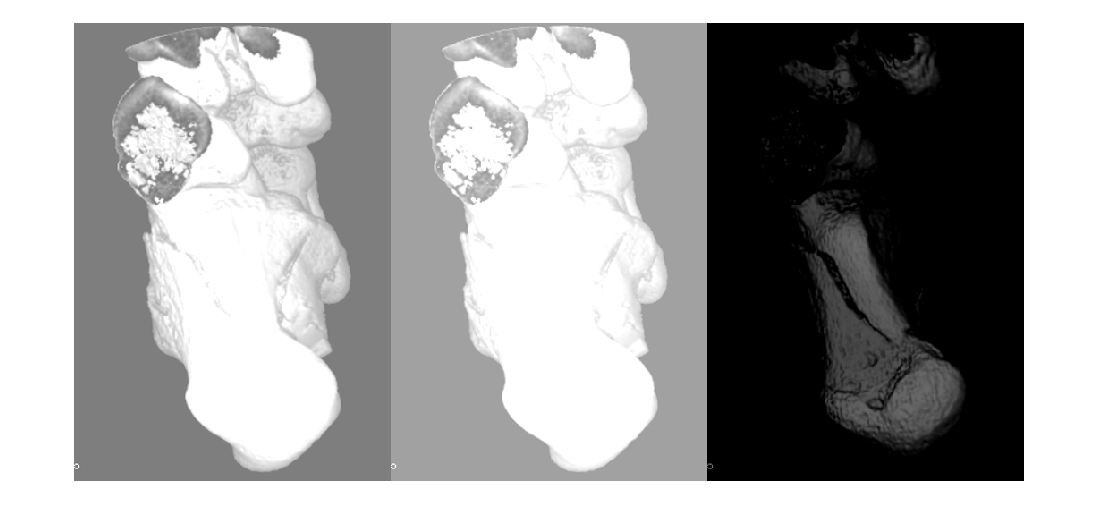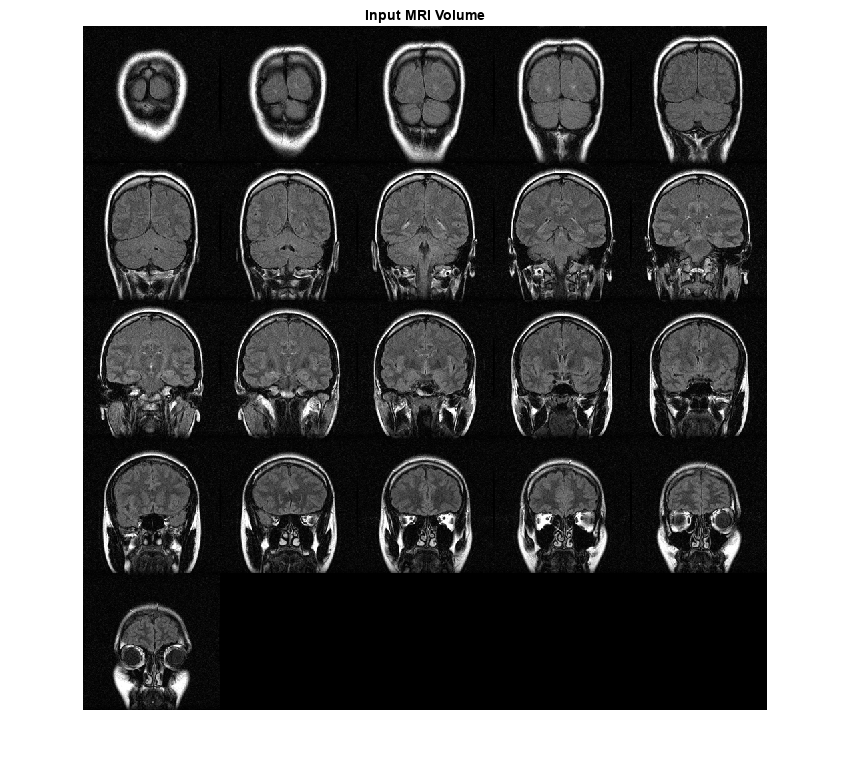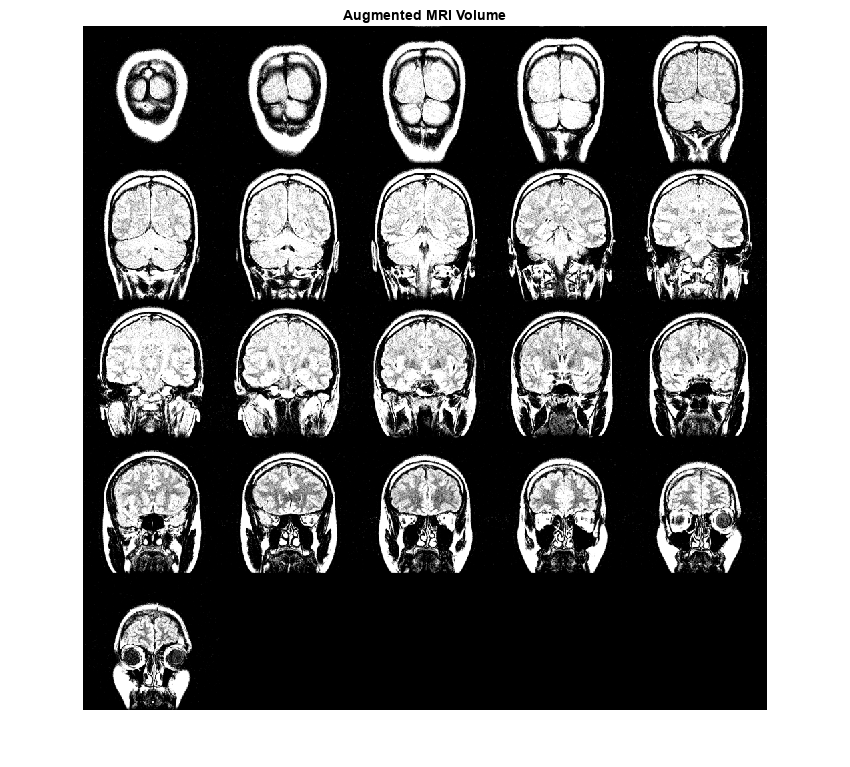jitterIntensity
Description
You can use data augmentation to increase the variety and quantity of training
data in deep learning applications, especially when available training data is limited, as is
typical in medical imaging. Data augmentation can be intensity augmentation, geometric
augmentation, or color augmentation. The jitterIntensity function performs
intensity augmentation of grayscale images and intensity volumes by randomly augmenting their
brightness, contrast, and gamma correction.
J = jitterIntensity(I,Name=Value)I by
randomly selecting brightness (shifting of intensity), contrast (scaling of intensity), and
gamma correction values. To specify ranges for these values, use the corresponding
name-value arguments.
Examples
Input Arguments
Name-Value Arguments
Output Arguments
Version History
Introduced in R2022b



